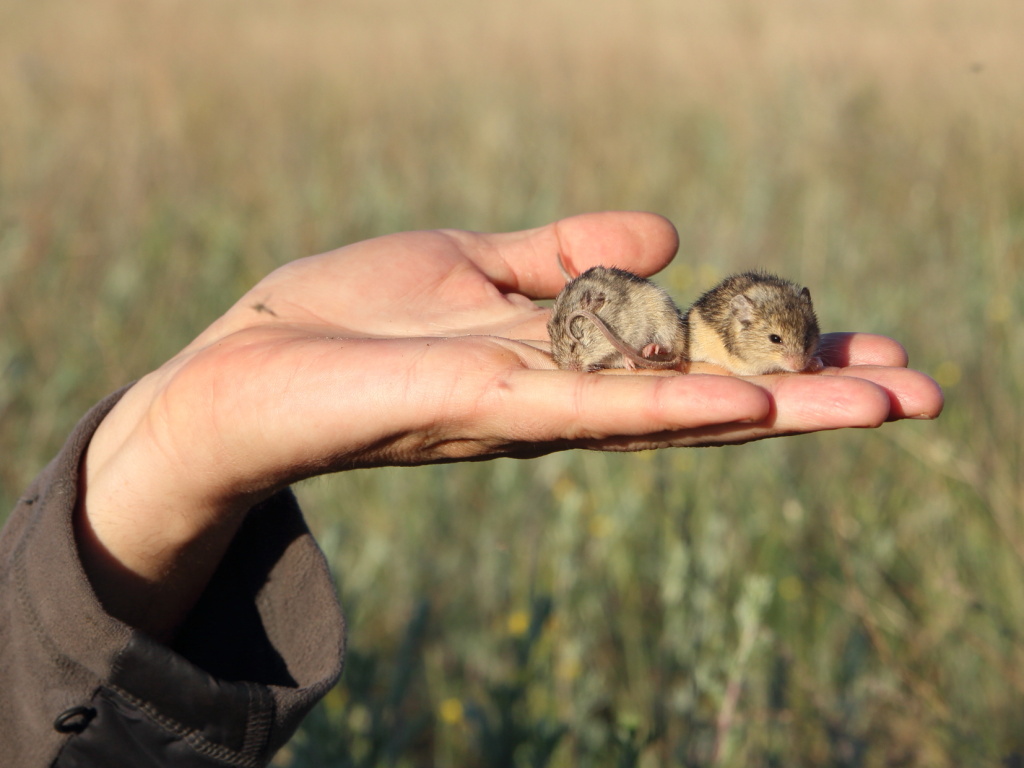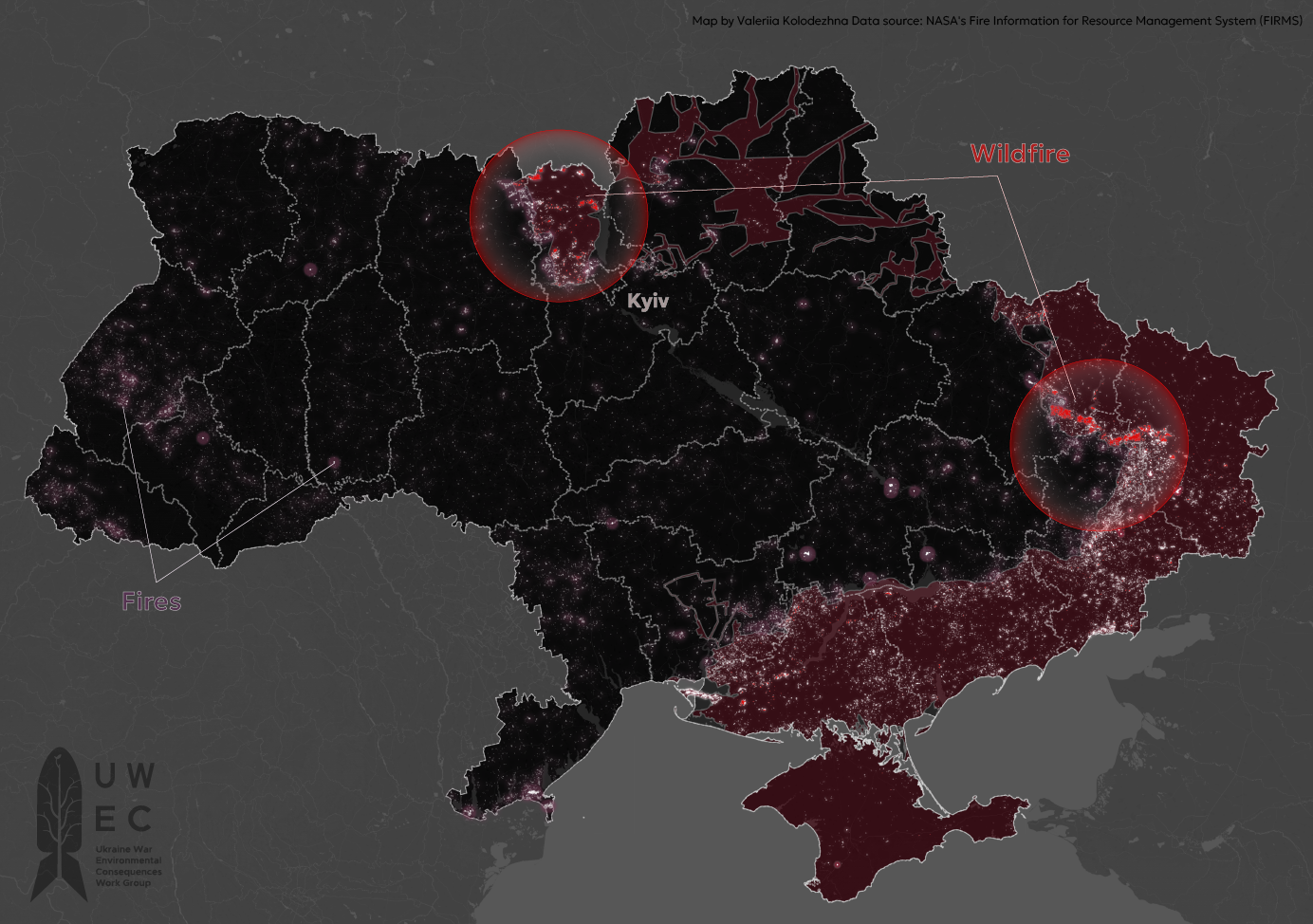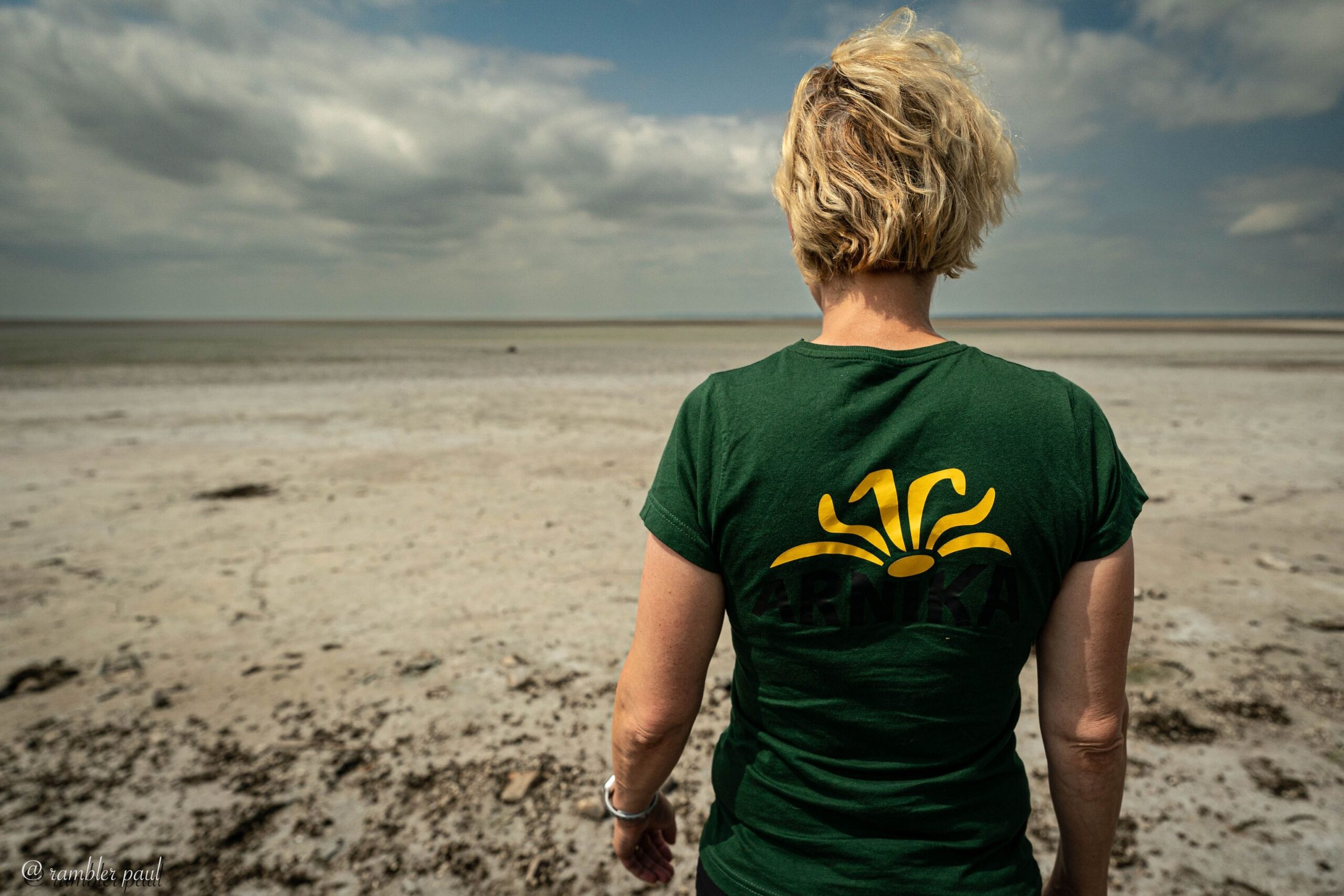Oksana Datsko
One of the world’s biggest suppliers of grain and industrial crops, Ukraine’s agricultural economy has been badly hit by Russia’s war of aggression. Although the country’s agrarian sector is well developed, the ongoing invasion has brought food shortages, logistical difficulties and a change in climatic conditions. New research shows that in the northern regions of Chernihiv, Sumy and Kharkiv, soils contain dangerously high levels of heavy metals, creating a potential threat to agriculture and food security.
The full-scale Russian invasion has had a serious impact on Ukrainian agriculture, particularly the condition of the soil in which crops are grown. Military activity, use of heavy equipment and damage inflicted by various types of shells on agricultural soils can have a significant impact on their fertility and, accordingly, on crop yield and quality. The preservation and restoration of soils has become a priority for farmers, scientists and the government, since food security depends on it – not only for Ukraine, but also for many countries around the world. With this in mind, scientists from the Sumy National Agricultural University (SNAU) have begun actively exploring the possibility of assessing the degree to which soils have been polluted with heavy metals.
The first step toward this was to develop a protocol for soil sampling in craters formed as a result of military action. To achieve this, Olena Melnik, an associate professor in the Department of Ecology and Botany at SNAU, who also heads the institute’s international projects division, teamed up with scientists from the UK’s Royal Agricultural University (RAU), located in Cirencester in southwest England. Working with RAU specialists, Melnik carried out fieldwork at the nearby military training ground on Salisbury Plain and developed a plan of action for carrying out scientific research.
Soil is the foundation of agriculture and food security: First steps in pollution research
“One of the key challenges facing our team, which has set itself the goal of developing a protocol for collecting soil samples, was how to adapt it for the conditions in Ukraine,” said Melnik. “If in Great Britain we had the opportunity to provide stability and controlled conditions for experiments in military training areas, in Ukraine active fighting and changing circumstances make it far harder to do this,” she explained, adding that safety was a particular concern for the experts collecting samples.
“In Ukraine’s fields we needed to ensure that the sector was de-mined and safe for work, since it was important to obtain samples not only in a crater, but at a certain distance from it in a control site. This is essential in order to compare the results obtained.”
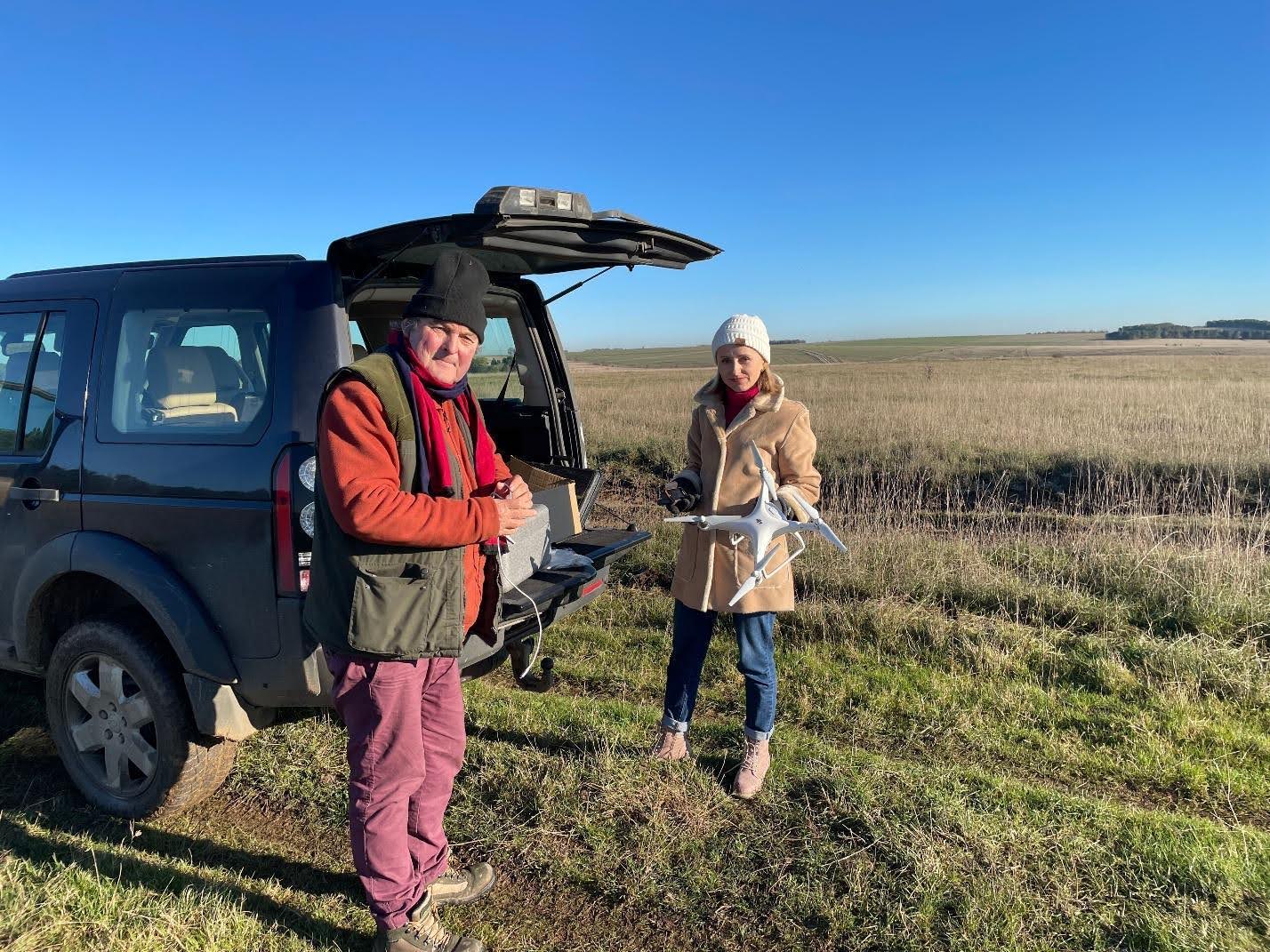
Collecting data on soil pollution in Ukraine
The next step in the research was field expeditions to collect soil samples in three regions of Ukraine that have been badly affected by the war: Kharkiv, Chernihiv and Sumy. The study was carried out in and around craters formed as a result of impacts from aerial bombs or multiple-launch rocket systems (MLRS), and showed the heavy metal content in these sites.
SNAU rector Ihor Kovalenko, a professor in the university’s Department of Ecology and Botany, shared his thoughts on the experience: “We began collecting samples in the spring of 2023. I had to work in the north of the Sumy region, in the Shostkinskyi district. The first experience was collecting samples in a crater that had been formed by an aerial bomb. The dimensions were enormous, and there was a great deal of work.
“Nonetheless, we had to work quickly, because this sector is still being shelled. This experience forced me to think more deeply about the point of our work. Collecting samples and documenting damage isn’t just documenting destruction, it’s a contribution to the country’s food security.”

Collected soil samples underwent careful preparation and were then subjected to analysis, which at first glance appeared to be the simplest stage of the research. However, the scientists soon ran into an unexpected challenge — interpreting the results. X-ray fluorescence analysis revealed the gross forms of heavy metals in the soil, i.e. the total quantity of each of them. But then a question arose: how safe are these concentrations for people and the environment?
Test results give hope for a swift recovery
Analyzing data on heavy metal content is not an easy task. Ukrainian legislation only outlines maximum permissible concentrations for individual metals, such as arsenic, barium, antimony and some others. The lack of specific standards for other metals significantly complicates the assessment of the danger they pose and their potential impact on the ecosystem. In order to gain an understanding of pollution levels, the decision was taken to compare data with control sites located at least 50 meters away from the craters (the distance depended on their size).
As for the consequences of bombs hitting agricultural land, the research reveals certain environmental problems. In some regions increased heavy metal content was discovered: barium, zirconium, rubidium, manganese and zinc. However, the situation is not as critical as it might have appeared at first glance.
This assumption was made in accordance, using one-way ANOVA (“analysis of variance”) when comparing data obtained from the crater and control samples. Statistically significant excesses were recorded in three of the seven craters studied, all of which were in the Sumy region, which contains chernozem soils with a neutral soil reaction (pH 6.7). On average, gross barium content at the control sites was within 300 mg/kg of soil, but the values in the crater exceeded that value by an additional 100-150 mg/kg of soil.
A similar situation was also noted for some other elements: zirconium content on the slopes of one bomb crater was 30 mg/kg of soil, for example. Some of the most excessive heavy metal content was recorded not only in craters created by explosions, but also in control areas where no impacts had occurred.
This suggests that military activity is not the only factor influencing soil quality – it is possible that some of the changes have been caused by violations of agricultural practices, such as the excessive use of fertilizers or pesticides.
Analysis of the data obtained from craters created by MLRS shells showed similar results: elevated levels of heavy metals such as barium, zirconium, manganese and zinc in the soil. In many cases, however, the concentrations of these elements remain within acceptable limits. Excessive quantities of the elements studied was noted in both control sectors and bomb craters.
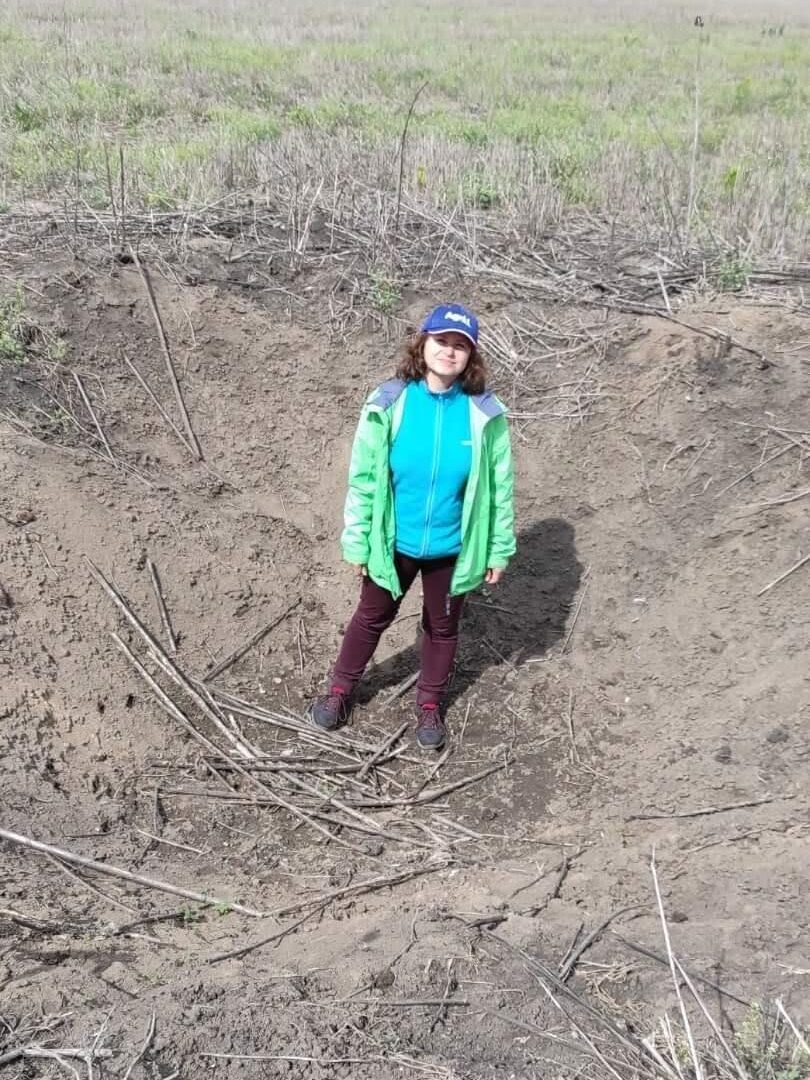
Phytoremediation: an agrochemical method for restoring damaged soils
Barium, zirconium and rubidium, although absorbed by plants, do not play a role in their physiological processes: they accumulate primarily in the green mass and do not penetrate the grain. Zinc and manganese are necessary for plant growth, promoting photosynthesis and the formation of proteins. However, excessive accumulations of these elements in the soil can affect crop production and the environment in general. It is advisable to use remediation methods to restore soils contaminated with these substances.
One of these methods is phytoremediation, the use of plants to clean soils. Research by SNAU scientists has proven, for example, that mustard is capable of absorbing barium and zinc in large quantities, even in its flowering phase. Mustard can be grown several times on a single plot per season, making remediation more effective.
Soil samples were therefore collected layer by layer at intervals of 10 cm to a depth of 1 meter. Scientists noted that barium levels in the soil fell by 90-200 mg/kg during the period from seedling emergence to flowering, depending on the sampling depth – a significant decrease. However, since barium does not play an active role in the vital functions of plants, there is no clear data on the transfer of barium to the harvested crop in scientific literature.
Thus, mustard may be useful to help restore agricultural lands contaminated with heavy metals. However, several vegetation periods of the crop may be needed to clean the soil and reduce contamination, an amount depending on heavy metal concentration and the soil’s physical and chemical characteristics. In addition to cleaning, the mustard plant enriches the soil with organic matter, improving its fertility and structure, which helps restore the land’s productive potential.
The study also examined the suitability of other plants for soil restoration and showed that peas have potential heavy-metal phytoremediation properties, particularly with iron and chromium. This shows that phytoremediation can be, in general, a relatively effective means of extracting heavy metals from soil.
What should be done with plant matter containing heavy metals?
It is usually recommended that vegetation with accumulated heavy metals should be burned. Although heavy metals remain in the ash after burning, filters can be used to prevent their release into the air. This method is especially attractive because energy crops, such as miscanthus, willow or castor oil plant (Ricinus communis), have a tendency to accumulate large quantities of heavy metals from the soil.
The burning vegetation is frequently the subject of discussion for scientists, but questions remain on the best way of disposing of the resulting ash safely. Some researchers suggest using the ash in cement production. Here too, questions arise regarding the kind of structures that can be built from such cement in order to prevent repeated environmental pollution.
War-damaged soils in Ukraine can be restored with the right approach
In general, the study results give cause for cautious optimism. Concentrations of heavy metals detected in the soil do not generally exceed maximum permissible levels, meaning there are significant opportunities for Ukrainian lands to be restored after the war. Careful agricultural approaches and increased control over the use of agrochemicals will help restore the natural balance. Modern technologies permit detailed studies of soil composition, allowing prompt responses to be taken to counter potential threats while maintaining the fertility of the soil.
Soil is one of the world’s main ecosystems. And in terms of environmental protection, when we talk about the pollution of individual areas with heavy metals, this is not simply a local problem, but also a possible threat to other ecosystems: groundwater, forest belts, and ultimately food (trophic) chains. All these components of nature are interconnected and none of them are immune to pollution’s consequences.
“The results obtained during the project do not allow us to say that agricultural lands exposed to shelling should be withdrawn from agricultural use,” says Elina Zakharchenko, an associate professor in the Department of Agricultural Technology and Soil Science at SNAU, commenting on the preliminary conclusions of the study.
“Particular attention should be paid to areas with high concentrations of heavy metals, where there may be a risk of bioaccumulation in the food chain – though nothing has been found so far. We should base the identification of areas that may be unsuitable for further cultivation on a multi-level risk analysis, including environmental, economic and social aspects. Conservation of such lands on a large scale may be considered if critical levels of contamination are confirmed, especially mobile forms of heavy metals.”
The bad news and the good news
During the course of their research, the SNAU scientists analyzed about 300 soil samples from 30 craters created by aerial bombs and MLRS shells, recording a certain excess of heavy metal concentrations. Special attention should be paid to results obtained from areas where military hardware was destroyed – sometimes the concentrations of heavy metals there are dozens or hundreds of times over the limit.
However, although the war has already left – and continues to leave – deep scars on Ukraine’s soils, prospects for their restoration and further effective use look promising. With the introduction of sound agricultural practices and proper environmental control, Ukraine’s agricultural lands will continue to provide food security for both the country and the world, despite all the challenges.
Risks to security mean that such studies of soils in frontline areas remain quite limited. Unfortunately, it will only be possible to draw more detailed conclusions once the war is over.
Oksana Datsko, PhD, is a senior lecturer in the Department of Agricultural Technologies and Soil Science at Sumy National Agricultural University
Translated by Alastair Gill
Main image source: IFPRI




